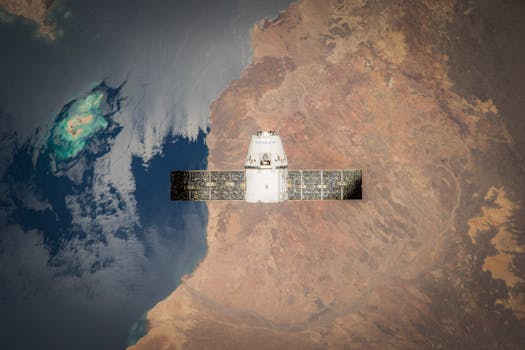The Rise of Mega-Constellations: Latest Updates in Satellite Telecommunications

The Rise of Mega-Constellations: Latest Updates in Satellite Telecommunications
Mega-Constellations and Satellite Telecommunications
The rise of mega-constellations is a significant development in the field of satellite telecommunications. Mega-constellations refer to a large group of satellites that work together to provide global coverage of the Earth. These satellites are designed to provide internet connectivity to remote and underserved areas, as well as to supplement traditional telecommunications infrastructure. The focus keyword, Mega-Constellations, is revolutionizing the way we communicate and access information.
Companies like SpaceX and OneWeb are leading the charge in the development of mega-constellations. SpaceX’s Starlink project, for example, aims to launch over 40,000 satellites into orbit to provide global internet coverage. OneWeb, on the other hand, is planning to launch over 600 satellites to provide high-speed internet connectivity to underserved areas. These satellites will use advanced technologies such as phased array antennas and laser communication systems to provide high-speed data transfer.
Advantages and Challenges of Mega-Constellations
The rise of mega-constellations has several advantages, including the ability to provide global internet coverage, improve telecommunications infrastructure, and increase access to information. However, there are also several challenges associated with the development of mega-constellations, including the risk of space debris, interference with other satellites, and the potential for unequal access to internet connectivity.
One of the main advantages of mega-constellations is their ability to provide global internet coverage. This can be especially beneficial for remote and underserved areas, where traditional telecommunications infrastructure may be limited or non-existent. Additionally, mega-constellations can provide a backup to traditional telecommunications infrastructure, ensuring that communication services remain available even in the event of a disaster or outage.
Latest Updates and Developments in Mega-Constellations
There have been several recent updates and developments in the field of mega-constellations. For example, SpaceX has recently launched several batches of satellites as part of its Starlink project, and OneWeb has announced plans to launch its own satellite constellation. Additionally, other companies such as Amazon and Facebook are also exploring the development of mega-constellations.
Despite the many advantages of mega-constellations, there are also several challenges associated with their development. For example, the launch of thousands of satellites into orbit can increase the risk of space debris, which can pose a hazard to other satellites and spacecraft. Additionally, the development of mega-constellations can also raise concerns about unequal access to internet connectivity, as well as the potential for interference with other satellites and spacecraft.
Conclusion
In conclusion, the rise of mega-constellations is a significant development in the field of satellite telecommunications. While there are several advantages associated with the development of mega-constellations, including the ability to provide global internet coverage and improve telecommunications infrastructure, there are also several challenges that need to be addressed. As the development of mega-constellations continues to evolve, it will be important to carefully consider these challenges and work to mitigate their impact.


